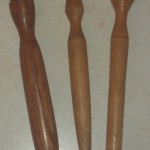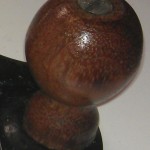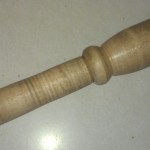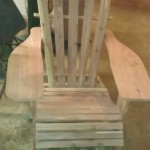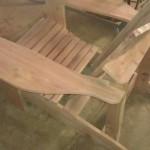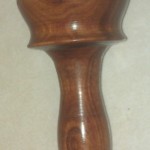 I decided that after attempting to use the first mallet, I needed one that had a little bit of heft to it. When looking at the prices on some of the mallets on the market that were comparable to what I was wanting to make, I decided it was worth it to use an exotic blank that was heavy. In this case the mallet is made from a South African species known as Mopane. This stuff was DENSE and HARD. The blank was 3″x3″x12″, and easily weighed 3 pounds. I bought two other blanks of the same size at the same time that were maple and cherry. The mopane blank was heavier then those two combine!
I decided that after attempting to use the first mallet, I needed one that had a little bit of heft to it. When looking at the prices on some of the mallets on the market that were comparable to what I was wanting to make, I decided it was worth it to use an exotic blank that was heavy. In this case the mallet is made from a South African species known as Mopane. This stuff was DENSE and HARD. The blank was 3″x3″x12″, and easily weighed 3 pounds. I bought two other blanks of the same size at the same time that were maple and cherry. The mopane blank was heavier then those two combine!
For a newbie turner, the wood choice made this a challenging turn. It forced me to get real good real quick at sharpening chisels as this wood was not at all forgiving with a dull chisel, and would rip out if the chisel needed sharpening. My one regret is that I wish I had taken more time to try to smooth the head of the mallet and do a better job sanding. There are some scratches on the head portion that didn’t become visible until I applied the finish. Since this is a shop project, and the head is going to get abused anyway, I didn’t worry about it, and moved on. The finish on it is, again, boiled linseed oil, with many coats of shellac sanded to 800 grit. Overall, I am really happy with the piece, and have had two family members try to talk me out of using it for its intended purpose. The final weigh-in for this mallet was just shy of 20 oz!

